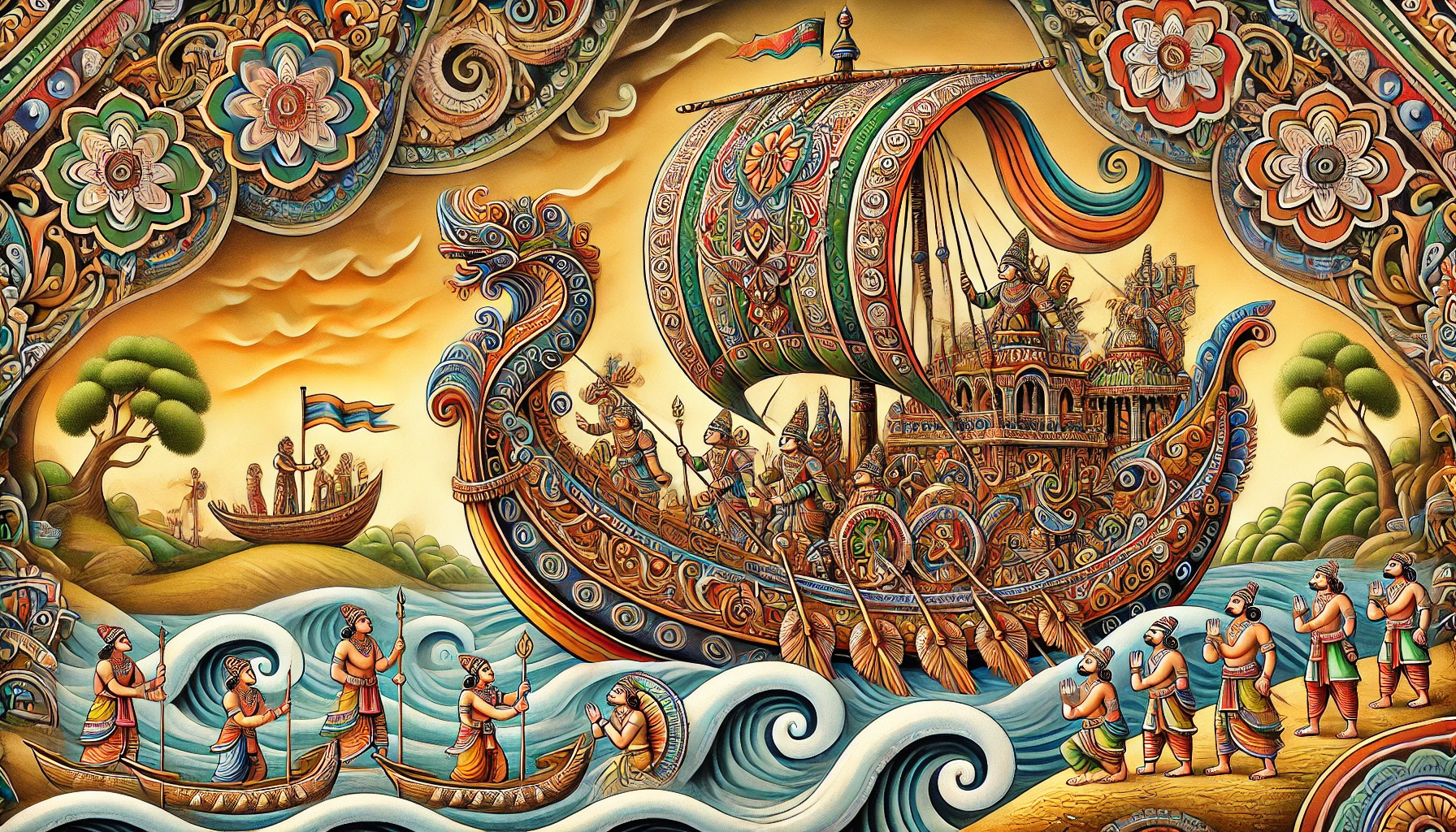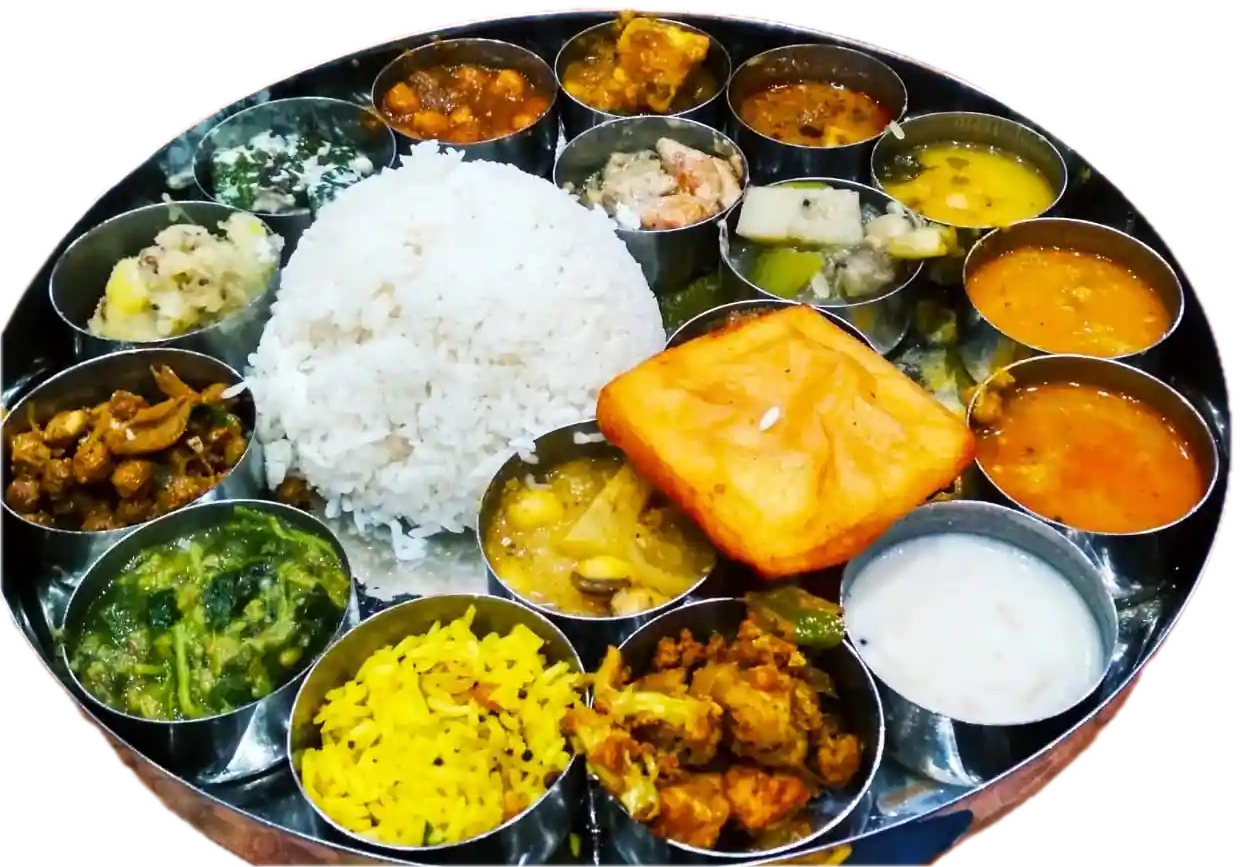A tale of Jeerango in the Eastern Ghats
Aug 21, 2017
It’s been almost a decade since I last wrote about my beloved Odisha, and for that, I owe you all an apology! Back in 2015, I shared my thoughts in “Odisha - The Land Slightly Unknown!”, aiming to introduce the world to the vibrant culture, rich history, and unique traditions of my home state. Little did I know that it would take me nearly nine years to finally bring you the much-anticipated sequel! Life, work, and the endless demands of the modern world took over, and for that, I admit – this is long overdue.
But, as they say, some stories are worth the wait. And when it comes to Jagannatha Sanskruti, the heartbeat of Odisha’s spiritual and cultural life, no amount of time could dull its magic. So, let’s dive right back into the wonders of Odisha, and this time, explore the deeper, timeless traditions that revolve around the mighty Lord Jagannatha – a deity who doesn’t just belong to temples but walks the streets, celebrating life with his devotees during the legendary Rath Yatra.
Over the years, I’ve seen how people from all corners of the world are drawn to the essence of Lord Jagannatha – not just as a religious figure, but as a symbol of devotion, humility, and unity. The Jagannatha way of life – Jagannatha Sanskruti – continues to guide millions, shaping their lives with the values of honesty, love, respect, and unwavering faith.
So, without further delay, let’s embark on this journey into the heart of Jagannatha Sanskruti, where tradition meets everyday life, and where festivals, devotion, and the simplicity of food come together to create the soul of Odisha.
The name Jagannatha is synonymous with Puri – one of the four sacred Char Dham pilgrimage sites in India. But beyond its religious significance, the Jagannatha temple is the nucleus of a living tradition that transcends religion. Lord Jagannatha, along with his siblings Balabhadra and Subhadra, is not confined to temple rituals but is a deity who steps out to connect with his people during Rath Yatra – the grand chariot festival.
The story of Jagannatha goes beyond the temple walls. He is the Darubrahma – the deity made of wood, a form believed to undergo cycles of renewal every 12 to 19 years in a sacred ritual called Nabakalebara. This makes him even more human-like, endearing him to devotees who see Jagannatha as someone who is close to their everyday lives, their joys, and their struggles.

If there is one event that defines Jagannatha Sanskruti, it is the Rath Yatra. Held annually in the city of Puri, this festival is a spectacle that draws millions from around the world. During Rath Yatra, Lord Jagannatha, along with Balabhadra and Subhadra, leaves the temple and embarks on a journey to Gundicha Temple, symbolizing his visit to his aunt’s house.
The festival is a beautiful representation of humility. During the procession, Lord Jagannatha - who is revered as the ruler of the universe - comes down to the streets and mingles with his devotees, symbolizing the oneness of all people. It is a reminder that no matter who you are or where you come from, we are all equal in the eyes of the divine.
An interesting anecdote from this event involves the tradition of the Gajapati Maharaja, the king of Puri. In a beautiful gesture of humility, the king himself takes on the role of a humble servant during the Rath Yatra by sweeping the chariots with a golden broom. This act, called Chhera Pahara, is a reminder of the core values of Jagannatha Sanskruti - humility, service, and devotion.
But life, as they say, is a mixed bag.
While the Jagannatha tradition itself is steeped in values of honesty, devotion, and love, there have been instances where certain groups have deviated from this path. Over the years, some individuals - whether they be Puri pandas (priests), politicians, or opportunistic groups - have, at times, tried to manipulate the traditions for personal or political gain, leading to controversies that have unfortunately tarnished the image of this otherwise sacred tradition.
For instance, the commercialization of the Nabakalebara festival or issues around temple access have occasionally led to public outcry. The misuse of temple funds and mismanagement during major festivals have often left devotees disheartened. And let’s not forget the occasional political interference that clouds the spiritual sanctity of Jagannatha’s abode.
These challenges are undeniable, but they also highlight an important truth - life is never black and white. It’s full of complexities, where the good and the not-so-good coexist. The actions of a few do not define an entire culture or its deep-rooted values. Despite these deviations, the majority of Odia people and true followers of Jagannatha Sanskruti continue to live by the values of honesty, love, and respect for others.
Beyond the grand chariots of Rath Yatra, one of the most remarkable and historically rich aspects of Jagannatha Sanskruti is the tradition of the Sadhabas - the ancient sea traders of Odisha. The Sadhabas were fearless maritime merchants who sailed to far-off lands like Bali, Java, and Sumatra, trading spices, silk, and other goods. Their voyages were not only a source of wealth for the region but also a symbol of Odisha’s rich heritage of exploration and entrepreneurship.
One festival that celebrates the memory of these seafaring ancestors is Kartika Purnima, which falls on the full moon day of the Kartika month. On this auspicious day, the people of Odisha gather at riversides, ponds, and beaches to set sail small boats made of banana stems or paper, in a ritual known as Boita Bandana (also called Boita Amabasya).

This beautiful tradition is a way of commemorating the Sadhabas and their courageous journeys. The tiny boats, often accompanied by chants of “Aa ka ma boi, pana gua thoi,” float down the waters, symbolizing the spirit of adventure, faith, and longing for prosperity. It’s a poetic reminder of Odisha’s historical connection to the sea and the brave souls who risked their lives to spread Odia culture across distant lands.
Kartika Purnima also marks the end of the sacred month of Kartika, considered the holiest month in the Hindu calendar. During this month, many devout Odias observe rituals, perform fasts, and refrain from consuming non-vegetarian food. The spirituality and reverence that surround Kartika Purnima exemplify the Jagannatha way of life - living with devotion, simplicity, and faith.
Odisha is not just known for its spiritual traditions but also for the simplicity and healthfulness of its food. Odia cuisine is a beautiful reflection of the state’s culture – minimalistic, nutritious, and packed with flavor. The focus is on using fresh, local ingredients, and the spices are used sparingly to preserve the natural taste of the food. Here are some of the most popular and beloved dishes that reflect the simplicity of Odia food:
Dalma is a dish that you will find in every Odia household and even offered as Mahaprasad at the Jagannatha Temple in Puri. It is a unique preparation where lentils are cooked with vegetables like pumpkin, raw banana, brinjal, and papaya. Flavored with mustard seeds, cumin, and a hint of ghee, Dalma is not only delicious but also highly nutritious. It’s rich in protein from the lentils and packed with vitamins from the vegetables, making it a balanced and healthy meal.
Santula is another simple yet highly nutritious dish. It’s a light vegetable stew made from seasonal vegetables such as raw papaya, brinjal, potato, and beans. What makes Santula special is its cooking process - it’s stir-fried with minimal spices like mustard and cumin and then simmered until soft. This makes it a perfect dish for anyone seeking a light, low-calorie, and easily digestible meal. The simplicity of Santula is what makes it so healthy and digestive-friendly, ensuring you get the nutrients without any heaviness.
Odia cuisine also includes unique dishes like Chhatu Poda, which is a roasted mushroom preparation. Mushrooms are cleaned, roasted, and cooked with spices like mustard seeds, garlic, and green chilies. This dish stands out for its earthy flavors and simple preparation. It’s packed with protein, and its minimalistic seasoning lets the natural umami flavor of the mushrooms shine through.
When it comes to sweets, Arisa holds a special place in every Odia heart. This traditional rice flour pancake is made during festivals and special occasions. The rice flour is mixed with jaggery and then deep-fried in ghee. The jaggery not only adds sweetness but is also rich in iron, making this a healthier alternative to sugar-laden sweets. Arisa is a perfect example of how traditional Odia sweets are as healthy as they are delicious.
Perhaps no dish symbolizes the simplicity of Odia food more than Pakhala, a fermented rice dish served with a side of fried vegetables or bhaja. Pakhala is essentially rice soaked in water overnight, and its fermented state makes it rich in probiotics, aiding digestion and cooling the body during the hot summers. Paired with crispy, spiced vegetables like potato or brinjal bhaja, it creates a perfect balance of flavors and textures, offering a comforting, homely meal that is as humble as it is healthy.

The beauty of Odia cuisine lies in its simplicity, use of local ingredients, and healthfulness. Whether it’s the lightness of Santula, the heartiness of Dalma, or the refreshing simplicity of Pakhala, every dish tells a story of a state that values balance, health, and flavor in its food.
Yes, there are times when Odisha’s cultural identity gets misunderstood or misrepresented due to the actions of a few. Whether it’s due to misguidance by certain groups, the growing commercialization of festivals, or the meddling of politics, such incidents remind us that life is indeed a mixed bag. There will always be elements that deviate from the core values of any tradition.
However, this does not dilute the purity of Jagannatha Sanskruti itself. It’s the enduring love, honesty, respect, and devotion of the people that truly define this ancient culture. The everyday stories of humility, the quiet prayers of the devout, the simplicity of the food, and the community spirit of sharing a meal at Anand Bazaar far outweigh the occasional deviations.
At its heart, Jagannatha Sanskruti continues to inspire and guide the lives of millions. Despite the complexities, it teaches us to embrace life in its entirety, to be compassionate, to serve others selflessly, and most importantly, to stay true to our core values. The true essence of Odisha lies in this balance - acknowledging the imperfections while striving for a life of honesty, love, devotion, and simplicity.
Stay connected for more stories of Odisha’s rich culture and life!
Thank you for reading!
Jai Jagannatha!
More Posts